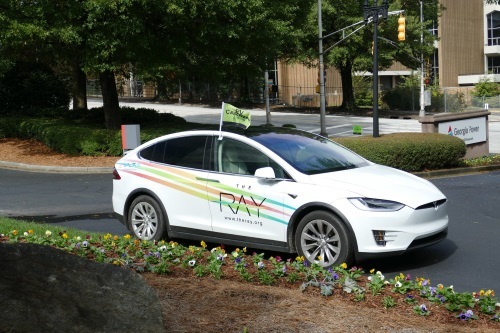FEDERAL ACTION
Report Highlights How State DOTs Deliver the Benefits of Transportation – AASHTO Executive Director
Biden Harris Administration Reveals Infrastructure Priorities – AASHTO Journal
Republicans tell Buttigieg that Biden’s infrastructure bill should focus on roads, rail, ports – not climate or social justice – USA Today
Democrats offer priorities via stand-alone infrastructure bills – Roll Call
U.S. Oil Lobby Backs Carbon Fee as Substitute for Regulation – Bloomberg Green
COVID-19
COVID-19 & Transportation Funding in Illinois: One Year Later – Illinois Economic Policy Institute (Link to study pdf)
INFRASTRUCTURE RESILIENCE AND SUSTAINABILITY
Caltrans: Rebuilt Section of Highway 1 Could ‘Last for Centuries’ – AASHTO Journal
Can the electrical grid handle a boom in electric vehicles? – Detroit Free Press
How to get started with measuring sustainability – Institute of Chartered Accountants in England and Wales
Los Angeles now has a road map for 100% renewable energy – Los Angeles Times
Governors Rev Up Momentum on Infrastructure – National Governors Association (Press release)
AIR QUALITY
Cargo bikes – The Future of Zero Emission Last-mile Deliveries – Air Quality News
Coalition Asks Biden Administration to Reduce Truck Emissions by Fall 2022 – Transport Topics
City sets lofty goal of reducing greenhouse gas emissions by 80% over next 30 years – KOLN-TV
ENVIRONMENTAL JUSTICE
Priority Shift: Great Lakes exec moves environmental justice to top of list – Great Lakes Now
Environmental Justice: Evaluating Zip Codes And Pollution Burdens – Science Friday
Lawmakers seek pause on plans to overhaul Massachusetts transportation system that provides rides to low-income and disabled residents – State House News Service
NATURAL RESOURCES
With Emphasis on Climate Change, St. Lawrence Seaway Opens for 63rd Season – Spectrum News
What’s that noise? ‘Sound cannons’ used to scare off birds near Santa Maria strawberry farms – KSBY-TV
Connecticut begins food waste recycling push to help solve waste disposal crisis – Hartford Courant
Thousands of acres must be restored to save declining species of birds on Lake Erie – Columbus Dispatch
The nation’s water infrastructure cannot be graded on a sliding scale – Penn Live/Patriot-News (Opinion)
CULTURAL RESOURCES
‘When Seattle Shakes’ online exhibition explores historical preservation and seismic risks – Seattle Times
HEALTH AND HUMAN ENVIRONMENT/ACTIVE TRANSPORTATION
Lawmakers Consider Update For Oregon’s Groundbreaking Bike Bill – Oregon Public Broadcasting
City officials attempting to ‘calm’ traffic down for pedestrians, bicyclists – Williamsport Sun-Gazette
Disabled Clark County residents join statewide demand for more sidewalks – Clark County Today
TRB RESOURCES/ANNOUNCEMENTS
An Update on Public Transportation’s Impacts on Greenhouse Gas Emissions – TCRP
New Biennial Review Says Stronger Science Support Needed as Everglades Restoration Pivots from Planning to Operations – National Academies of Sciences, Engineering, and Medicine (Press release)
FEDERAL REGISTER NOTICES
Notice of Final Federal Agency Actions on Proposed Highway in Idaho – FHWA (Notice of limitation on claims for judicial review of actions by FHWA)
Drawbridge Operation Regulation; Little Manatee River, Ruskin, Hillsborough County – Coast Guard (Final rule)
Seaway Regulations and Rules – Great Lakes St. Lawrence Seaway Development Corporation (Final rule)
Notice of Intent To Prepare a Draft Integrated Feasibility Report and Environmental Impact Statement for the Charleston Peninsula Coastal Flood Risk Management Study, Charleston County, South Carolina – U.S. Army Corps of Engineers (Notice)
South Carolina: Final Approval of State Underground Storage Tank Program Revisions, Codification, and Incorporation by Reference – EPA (Direct final rule)
Brownfields Stakeholder Discussion and Listening Session With Nonprofit Organizations and Community Foundations – EPA (Notice)
Air Plan Approval; Maine; Removal of Reliance on Reformulated Gasoline in the Southern Counties of Maine – EPA (Proposed rule)
Approval and Promulgation of State Plans for Designated Facilities and Pollutants; North Dakota; Control of Emissions From Existing Municipal Solid Waste Landfills; Control of Emissions From Existing Commercial and Industrial Solid Waste Incineration Unit – EPA (Proposed rule)
Drawbridge Operation Regulation; New Jersey Intracoastal Waterway, Point Pleasant, NJ – Coast Guard (Notice of proposed rulemaking)
Transcontinental Gas Pipe Line Company, LLC; Notice of Request for Extension of Time – Federal Energy Regulatory Commission (Notice)
Review and Approval of Projects – Susquehanna River Basin Commission (Notice of proposed rulemaking; notice of public hearing)


